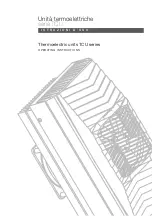
11
Operating Procedure for PLASMA Cutting
5)
Correct amperage and travel speed
are important and relevant to material
thickness and are correct when sparks
are exiting from the work piece.
If sparks are spraying up from the work
piece there is insufficient amps selected
or the travel speed is too fast.
6)
To finish the cutting release the torch
switch. The air flow will continue for 30
seconds to cool the torch head.
2)
Connect the Earth Clamp securely to
the work piece or the work bench.
3)
Place and hold the torch vertical at the
edge of the plate
4)
Pull the trigger to energise the pilot
arc. The cutting arc will start when the
nozzle is moved closer to the edge of
the work piece. When the cutting arc has
cut through the edge of the plate start
moving evenly in the direction you wish
to cut,
1)
Wear your safety gear. Generally you want the
same type of protective gear as when welding.
Plasma has high arc voltage if the job or bench is
wet and you place your hand or arm on it you can
become part of the circuit and receive a shock, be
sure you are wearing leather gloves, Full lenght
pants and covered shoes, Wear eye protection a
#5 shade is the minimum eye protection with other
shades required depending on amperage. A face
shield is also recommended,
Operating procedure using the Stand Off Guide mounted to TRF-45-6-CC1 torch.
The feet of the standoff guide are placed on the cutting surface. This maintains an
optimal 5/64" standoff distance between the plasma cutting tip and the work, this is
especially suitable if your hands are unsteady, or if you wish to use a straight edge
guide or pattern guide. It also helps extend tip life.
Cut Quality
A clean cut depends on several factors:
●
amperage
●
travel speed
●
tip height & position
●
tip and electrode quality
●
air pressure and quality
●
technique
The best quality cut will be produced when all these variables are set correctly for the material thickness
and type of material being cut.
Poor quality cut
Good quality cut
Razorweld
Razor
weld
™
™
™
™










































